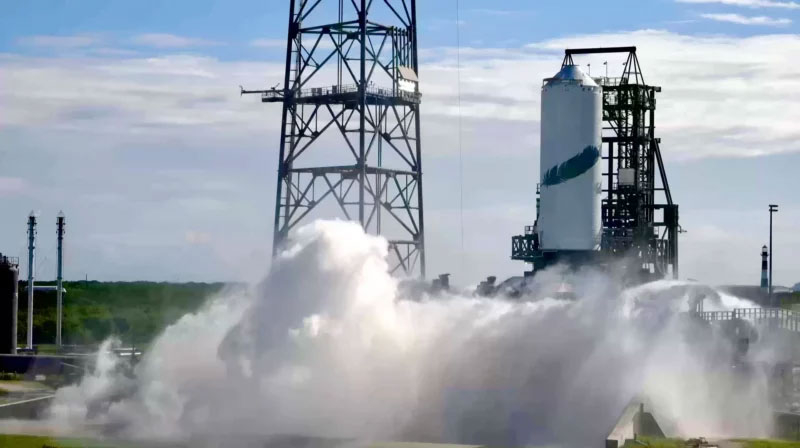On Monday, September 23, Blue Origin briefly ignited two BE-3U rocket engines on the Glenn Stage 2 (GS2) second stage of the New Glenn launch vehicle for the first time. The engines ran for 15 seconds on oxygen and hydrogen. “Today there is water, smoke and fire from all three angles,” the company said on social network X. These tests are a chance to carry out the long-awaited rocket launch before the end of the year.

Image source: Blue Origin
The experiment on static burning of rocket engines as part of the second stage was the first in the history of the future rocket. The company said this was necessary to “reduce risk.” The company still plans to make its first launch of the New Glenn rocket in November this year, although the historic debut launch under the NASA contract, which included the launch of two satellites to study the magnetosphere of Mars, previously planned for October, has been postponed until next year.
Blue Origin has until November to assemble the first stage of the rocket with seven BE-4 rocket engines using methane and oxygen. Fortunately, the BE-4 engines have already been tested in space. In early 2024, ULA’s Vulcan rocket took off using these engines. As part of the New Glenn rocket, these engines will also be tested with a static fire load before launch – already as part of a fully assembled rocket installed on the launch pad.
Water, smoke, and fire from three angles today. GS2 hotfire complete! https://t.co/DUeh6F8Jws pic.twitter.com/qUjxu52XGI
—
Blue Origin employees can expect busy weeks of work if they can stick to management’s proposed schedule. The first and second stages were assembled together only once, and this is an extremely large structure with a height of 98 meters. There is always the possibility that something will go wrong during the final assembly stage, especially when preparing for the first rocket launch. Unpleasant surprises will probably not be avoided.
Blue Origin’s new chief executive, Dave Limp, urged employees to “not take their foot off the gas pedal” in an email to employees. The company is scheduled to end the year with the launch of a rocket that will eventually participate in NASA’s Artemis lunar program. In terms of launching payload into orbit, New Glenn is ahead of SpaceX’s Falcon 9, although it is inferior to Falcon Heavy, launching 45 tons of payload into low Earth orbit. NASA and its partners need such a heavyweight, and its first launch should take place very soon.